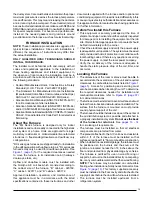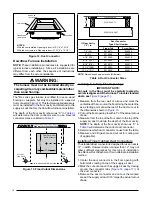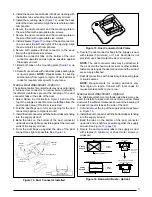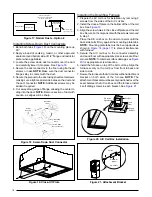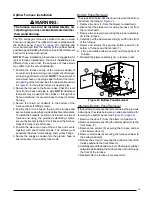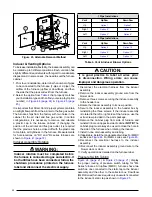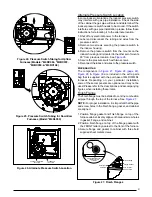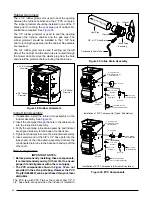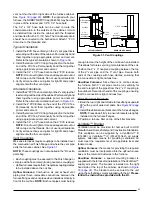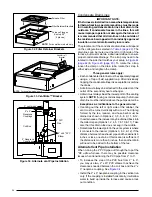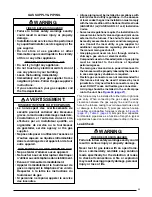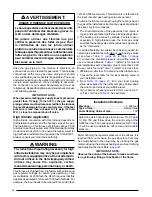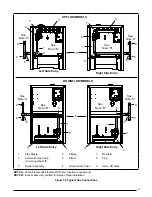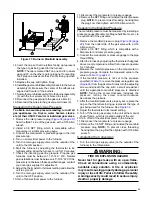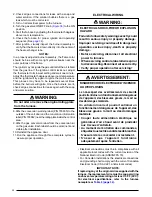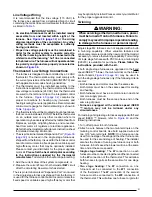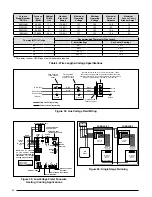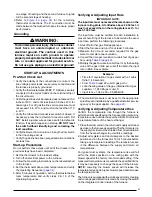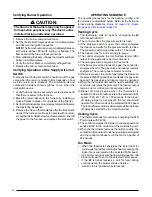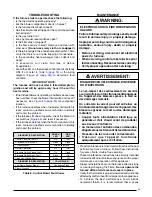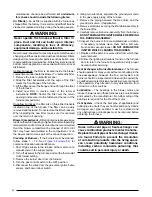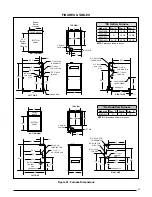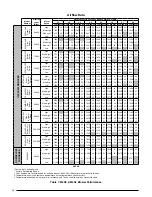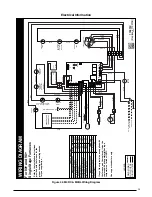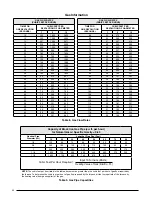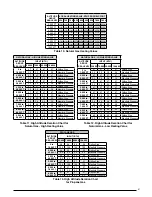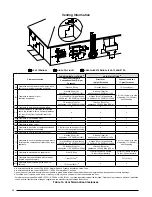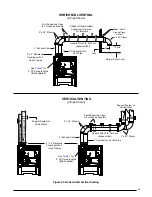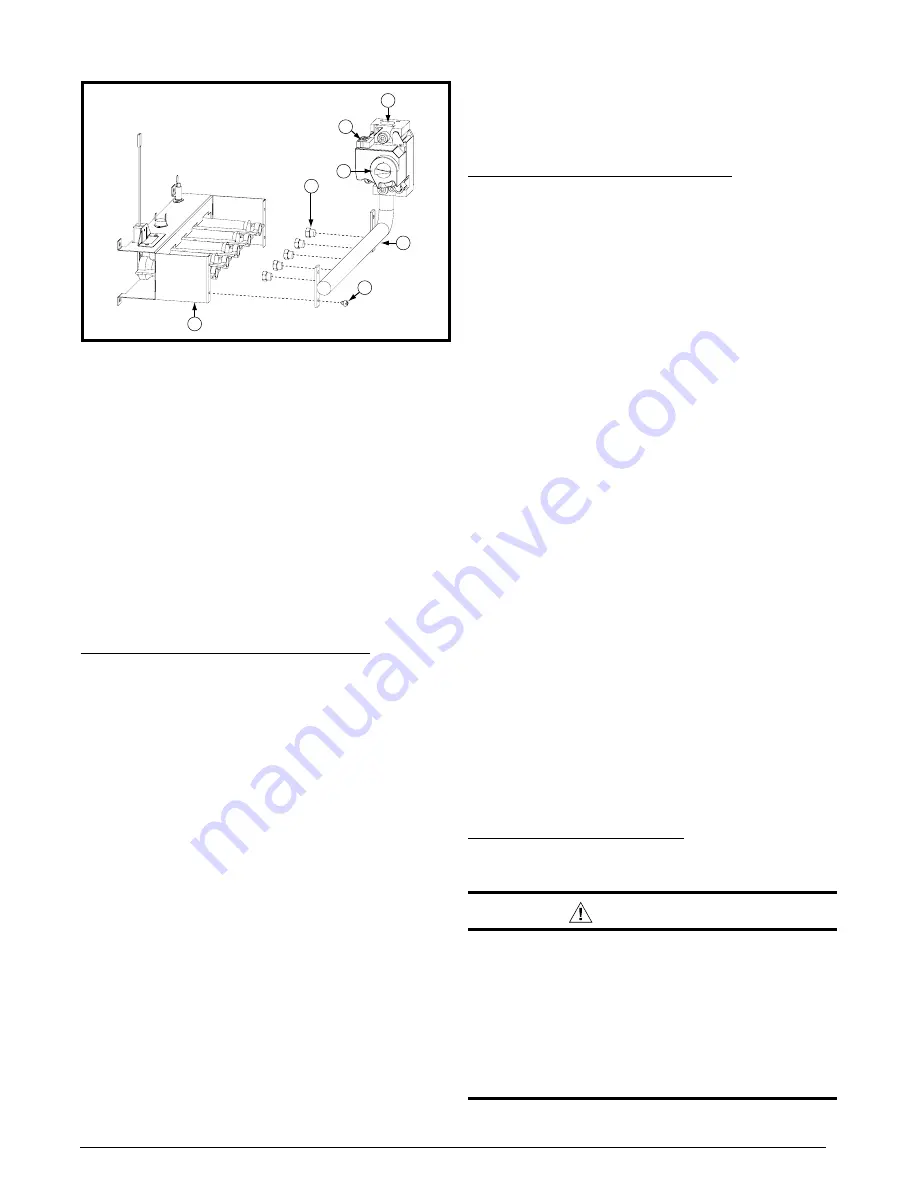
29
14. Invert the cap so that the letters facing up represent
the type of gas being used for the furnace.
NOTE:
The cap is marked NAT on one end for natural
gas and LP on the other end for propane. If converting
to LP propane, make sure the LP end is facing up when
installed.
15. Replace the cap and tighten firmly.
16. Install the gas manifold assembly (5) back into the burner
assembly (6). Make sure the center of the orifices are
aligned with center of the burners.
17. Secure the manifold assembly (5) to the burner assembly
(6) with the four screws (4), removed in step 8.
18. Reconnect the gas piping to the gas valve inlet (3).
19. Reconnect the wires to the gas valve terminals (2).
Measuring the Supply Gas Pressure
To obtain an accurate pressure reading, turn off all
gas appliances (i.e. Dryers, water heaters, stoves,
etc.) at their ON/OFF control or individual gas valves.
1. Remove the inlet pressure plug (
)
from the INLET side of the gas valve with a 3/16 Allen
wrench.
2. Install a 1/8 NPT fitting, which is compatible with a
manometer or similar pressure gauge.
3. Connect the manometer or pressure gauge to the inlet
pressure tap.
4. Turn on all electrical power to the furnace.
5. Turn the main gas supply valve (on the outside of the
unit) to the ON position.
6. Start the furnace by adjusting the thermostat to it’s
highest setting. Allow the furnace to run for 10 minutes.
7. Check the incoming gas line pressure. Propane gas
furnaces must be between 11.0”-14.0” W.C. Natural
gas installations must be between 4.5”-10.0” W.C. If the
pressure is not between these specified ranges, contact
your local gas supplier for adjustment.
8. Adjust the thermostat to it’s lowest setting and allow the
unit to cycle off.
9. Turn the main gas supply valve (on the outside of the
unit) to the OFF position.
10. Turn off all electrical power to the furnace.
Figure 37
Figure 37.
Burner & Manifold Assembly
3
2
1
7
5
4
6
11. Disconnect the manometer or pressure gauge.
12. Remove the NPT fitting and reinstall the inlet pressure
plug.
NOTE: To prevent cross threading, hand tighten
the plug first, then tighten with 3/16 Allen wrench.
Measuring the Manifold Pressure
The manifold pressure must be measured by installing a
pressure gauge (Manometer, Magnehelic Meter, etc.) to
the outlet end of the gas valve.
1. Remove the manifold pressure plug (
) from the outlet side of the gas valve with a 3/16
Allen wrench.
2. Install a 1/8 NPT fitting, which is compatible with a
Manometer or similar pressure gauge.
3. Connect the manometer or pressure gauge to the pipe
thread fitting.
4. Start the furnace by adjusting the thermostat 5 degrees
above room temperature. Allow the furnace to operate
for 3 minutes.
5. Measure the manifold pressure on the manometer or
pressure gauge. Compare the measured value to the
value in
.
6. If the manifold pressure is not set to the pressure
, remove the pressure regulator cap
(
) from the gas valve. Slowly turn the adjusting
screw underneath the cap with a small screwdriver
until the appropriate manifold pressure is obtained.
NOTE: Turning the screw clockwise increases the
pressure, turning the screw counter-clockwise
decreases the pressure.
7. After the manifold pressure is properly set, replace the
cap so that the letters facing up represent the type of
gas being used for the furnace. See
8. Adjust the thermostat to its lowest setting.
9. Turn off the main gas supply to the unit at the manual
shut-off valve, which is located outside of the unit.
10. Turn off all of the electrical power to the furnace.
11. Disconnect the manometer or pressure gauge.
12. Remove the 1/8 NPT fitting and reinstall the manifold
pressure plug. NOTE: To prevent cross threading,
hand tighten the plug first then tighten with 3/16 Allen
wrench.
Completing the Conversion
1. Turn the main gas supply valve (on the outside of the
furnace) to the ON position.
WARNING:
FIRE OR EXPLOSION HAZARD
Never test for gas leaks with an open flame.
Check all connections using a commercially
available soap solution. A fire or explosion
may result causing property damage, personal
injury or loss of life. Failure to follow the safety
warnings exactly could result in serious injury,
death or property damage.
Summary of Contents for M4RC-072D-35C
Page 47: ...47...

